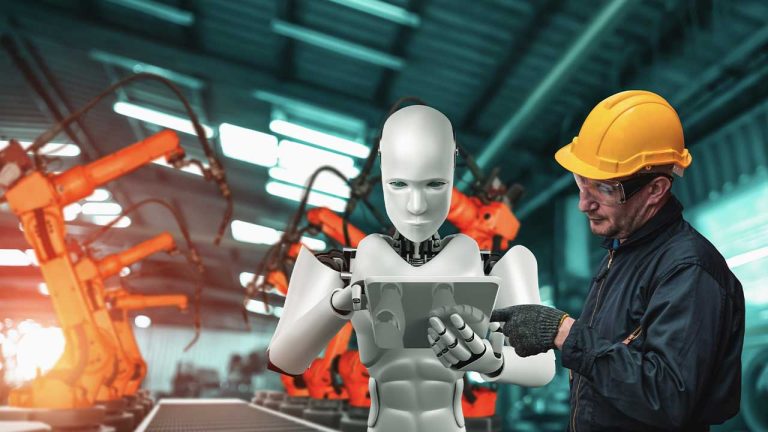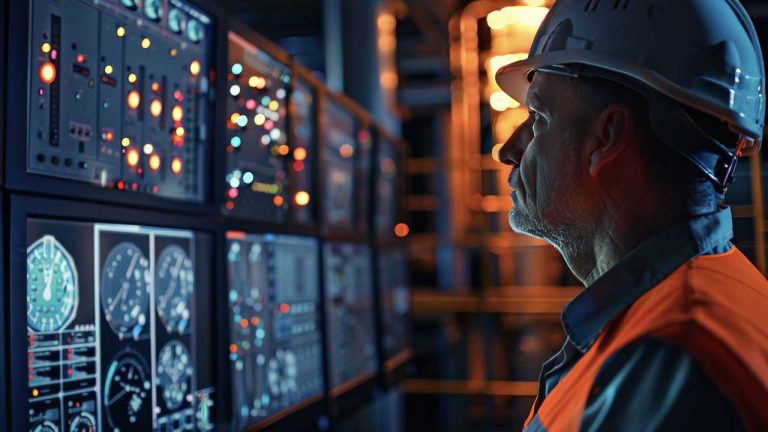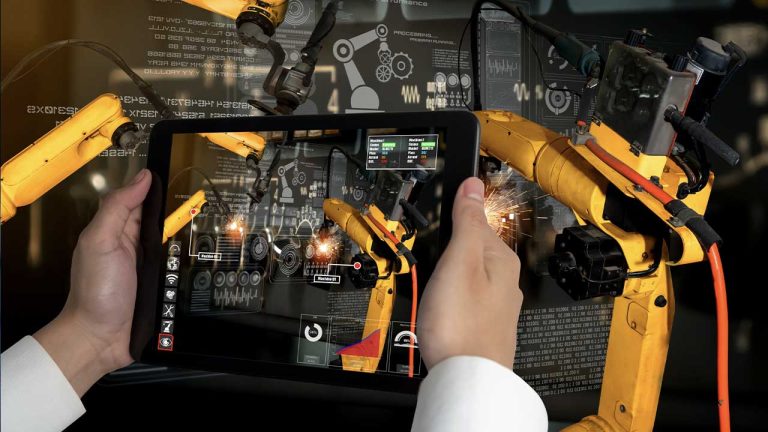Unleash the Power of IoT-based Predictive Maintenance
In today’s competitive industrial world, predictive maintenance (PdM) is no longer a nice-to-have; it has become a necessity. Traditional PdM methods have several limitations. However advancements in wireless, cloud and AI technology are disrupting the way PdM has been done in recent decades. Companies are making use of these technologies to offer an end-to-end, easy-to-deploy PdM solution at extremely affordable price points. This trend is called the Industrial Internet of Things (IIoT). According to ARC and others, IoT predictive maintenance is currently the biggest use case for IoT across all sectors. This article compares and contrasts the traditional models with the modern IoT-based PdM approach.
Run-to-Failure and Preventive Maintenance
Traditionally, most factories have adopted either a reactive (run-to-failure) or a preventive maintenance (PM) model because of the high costs of IoT predictive maintenance. In a reactive model, a machine is repaired or replaced only in the event of a failure. This leads to unplanned downtime and significant repair costs. Ideally run-to-failure is recommended for the least critical assets which have very little impact on operations.
Under a preventive maintenance approach, maintenance teams create predefined repair schedules without considering the actual condition of the machine. Work order schedules are often based on manufacturer’s recommendations. These schedules can be unreliable because the actual operating condition of the machine may be different from the recommended operating condition. Also, improper PM can lead to unintended malfunction.
In either of these approaches, the focus is not on assessing and predicting machine condition.
Traditional Predictive Maintenance
Predictive Maintenance is referred to the maintenance approach of understanding the underlying “health” of a machine to determine if a corrective action is required. To determine the health of the machines, sensors are used to measure various machine parameters such as vibration, temperature and ultrasound.
In continuous monitoring, wired sensors are installed on the machines are connected back to the asset management software. However, this is a very expensive solution and is often reserved for the small percentage of the most critical machines.
For the balance of plant equipment, predictive maintenance has typically been conducted using a walk around program. A technician goes around the plant periodically and collects sensor data using a data collector.
However, this traditional approach of once a month data collection is not truly predictive as it comes with several limitations.
Here are the main reasons why a walk around program does not constitute a truly predictive maintenance solution.
Failures between data collection rounds
In walk around programs, even in well run ones, technicians only collect data once every 30 or 90 days. The problem is that any defects that occur after the last data collection cycle remain undetected until the next data collection cycle. As a result, machines remain prone to failure which results in unplanned downtime.
Inconsistent data collection
In a walk around program, technicians may not place the sensors accurately and consistently. This leads to faulty data and inaccurate assessment of machine’s health.
Variable operating conditions
One of the most important things to consider during data collection is that the operating condition of the machine needs to be the same every single time. However, this is very hard to do. So when the analyst sees “high” sensor data they may inaccurately conclude it to be a machine fault. However, it could have just spiked due to increased loads!
Inaccessible machinery
Often machines are not easily accessible, either because there are safety concerns or they are behind a cage. So technicians end up not collecting data on such machines allowing them to fail
Manual Analysis
All of the collected data needs to be analyzed manually. It’s not real time and it’s hard to scale manual analysis when you are dealing with hundreds and thousands of machines.
Up until recently, most industries relied on walk around programs because continuous monitoring was extremely expensive. But not anymore!
Technology Trends are Paving the Way for a PdM Revolution
Industrial IoT is making the transformation to continuous condition-based monitoring and IoT predictive maintenance incredibly easy and affordable.
There are four key trends driving change in IoT Predictive Maintenance:
- Wireless Connectivity: With the advent of cellular and Wi-Fi connectivity, wireless connectivity is pervasive these days enabling wireless sensors to sense and transmit any machine parameter. Sensors no longer need to be wired which makes data collection automatic and cost effective. More about Enabling a New Era of Industrial IoT with Free-Use Wireless Spectrum
- Inexpensive Sensors: The smartphone revolution has really driven down the price of sensing. Miniaturized low-cost MEMS sensors are readily available and more affordable than ever before.
- Cloud Computing: Cloud computing has become robust, highly secure and inexpensive. This gives industrial plants the ability to start small and scale up as their needs increase.
- Artificial Intelligence (AI): Artificial Intelligence technologies have finally become mainstream. Monitoring time series sensors data is impossible to do manually. AI can serve as an effective “assistant” to analysts.
While in isolation each of these technologies bring some value, when combined together into a single solution, they have the power to transform the industrial world.
Future of IoT Predictive Maintenance is Here
Modern solutions involve wireless sensors that continuously collect sensor data. The sensors keep a close watch on the key parameters of the machine such as vibrations or temperature. Periodically, or when a threshold is exceeded, the sensors wirelessly send the data to the cloud through a wireless gateway such as WiFi, Bluetooth or various other wireless technologies available on the market. Once the data reaches the cloud, it is processed to extract the key parameters that are necessary to determine machine health. Users can view the trending of these critical parameters and set thresholds on a web or mobile dashboard.
The more sophisticated solutions go further by including an analytics module that can analyze all of the sensor data in real time and automatically. Given all the recent advancements in AI such as deep learning and use of GPU chips, AI-based analytics are able to detect machine anomalies, do diagnosis and provide prognosis. Future advancements in this space involves combining multiple sensor parameters alongside historical work order information. And all of this is happening in real time!
The future holds the promise of completely automating predictive maintenance. No more manual data collection, no requirement to be onsite near the machine. And with AI technology, it really helps scale the job of a machine expert. AI can keep a close watch on all machines and flag the problems ones. An expert needs to only review the health of the machines exhibiting anomalies. AI completely replaces the need for setting up and maintaining manual alarms. These alarms are hard to set accurately and as a result users end up losing confidence in a system. But with AI, alarms are data driven – data that is hard for humans to process but easy for computers to digest.
Historically, adopting advanced technology involved a huge upfront CAPEX investment which often resulted in limited adoption of the technology. However, with the advent of these new technologies, that’s no longer the case. Sensors and software are becoming increasingly inexpensive. Further, industries can start small by monitoring a few critical machines and then scale to the entire facility gradually.
Most importantly, all this cool technology translates to tangible benefits. Industrial plants are able to eliminate unplanned downtime, lower preventive maintenance costs and reduce unanticipated repair costs.
Conclusion
Everything from the food we eat to the fuel that powers our cars, from the medicines we consume to the electricity that lights our homes is powered by factories. These factories have millions of machines that turn, churn, mix, grind, and transport things. Wireless IoT predictive maintenance with AI-based analytics make it possible to monitor, analyze and predict the health of these machines that are driving our everyday lives.
We see a future where preventive maintenance is entirely replaced by IoT predictive maintenance. Repairs or corrective action are only required when predictive technologies indicate failing health of machines. With clear advantages over traditional approaches, wireless predictive maintenance is poised to transform maintenance forever. More about The limitations of IIoT
The article was written by Abhinav Khushraj, the co-founder and CEO of Petasense. He brings over a decade of experience in building businesses at larger corporations like Citrix and Nokia. He has also founded two other technology startups in the past. Khushraj has a degree in computer science from BITS, Pilani and an MBA from MIT Sloan. The article was published here first.



